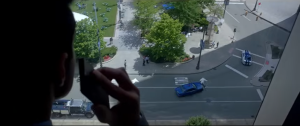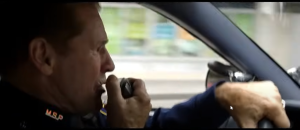Final Project Rough Cut
One Minute Short
Heist Rough Cut Joel
Final Project Description
For my final project, I plan on creating a job profile for my friend who does structural welding on tug boats. The job itself is very interesting and is something not a lot of people see or know about. To complete my rough cut by the last class, I plan on recording my B roll footage as soon as possible, so I have time to compile it into a cohesive sequence of visual evidence. I should be able to film everything in one night, but I need to get permission to film, as the job is not in the most safe environment a lot of the time. I plan on getting permission by Thanksgiving break.
View PostOne Minute Story Script
My group’s story will be an action comedy revolving around a heist that seems serious but ends up being mediocre and not on a heist-worthy establishment at all. To film our short effectively, we will need a room, preferably a basement with dim lighting, and a table suitable for four people, one on each side. We will also need a car suitable as a getaway vehicle and a location to “rob.” Our props and wardrobe needed will be minimal and simple to acquire, mostly black clothing and masks. As for permissions, all of our filming will be done privately or in public, not inside any establishment, so no permits are required.
View PostJob Profile/Interview
Blog 10/18
Shooting my job profile has been fun but challenging. I chose to film my dad, as he has the only career in the family I can do a profile on. Another challenge that arose was collecting visually appealing footage that works for the profile, as my dad is retired, and I cannot get footage of him actively working. To combat this issue, I was able to film old memorabilia that he still has, such as his old CHP motorcycle helmet from the 70s, and even an episode of an old “cops” style TV show featuring my dad. While it would have been better to film him actively working, I feel that the visual evidence I gathered still effectively shows what his job was all about.
View PostCompositing, Effects and/or AI
effects used, Time warp, Lens Flare, Color Correction
View PostVisual Evidence
Devil’s Playground explores a key issue: will young Amish people stick with their community or join the “English” world? Many parts of the movie show this dilemma. We watch Amish teens partying, drinking, and driving cars. These images clash with what we think of as the Amish way of life. They give us a strong picture of the inner conflict these young people face, whether to stay Amish or become part of the wider world. The images we see here work well to show these young people struggling with personal issues, torn between their religious rules and what modern life offers. The filmmakers capture this clash by moving from peaceful Amish farms to wild parties giving us a clear picture of the tension. Some bits of these scenes might seem set up because the filmmakers get so close to these private moments, but it’s tough to say for sure. The way things play out looks real, but people might be acting up a bit for the camera to make things more exciting.
View PostMontage
Posthuman Cinema
The video “POSTHUMAN CINEMA” uses surreal imagery, black and white colors, and dramatic music/dialogue to create an intense dream-like feeling in the viewer. The opening scene shows a woman in the desert floating softly toward the ground in a flowing dress, which sets the tone for the video in a very surreal manner. The video focuses on the people in each shot, all having dramatic poses, expressions, or movements. Each shot has a dark background, with a very cinematic and almost spotlight effect on the subject. Throughout the video, the subjects morph from one pose to the next, as if they are shapeshifting. By using these sorts of techniques, we are unable to predict what might happen next. In traditional films, the audience is normally able to follow along with the plot/scene and have guesses and predictions as to what the possibilities are for the following shot. With AI imagery, there is a constant morphing of the subject that allows the viewer to maintain a constant curiosity about what is to come next which I think is an interesting aspect to AI videos as a whole.
View PostOff Screen Window Story
framing and editing Shameless
Continuity Assignment
Framing Assignment
Continuity in Duel (1971)
Duel (1971) Railroad Crossing
In the railroad crossing scene from Duel (1972), several editing techniques work together to create tension and keep the action easy to follow. The 180-degree rule keeps the viewer oriented by maintaining the positions of David Mann’s car and the truck on either side of the scene. To avoid jarring transitions, the camera moves at least 30 degrees between shots, such as when it cuts from a wide shot of the crossing to a close-up of Mann’s face or hands. These shifts keep the action smooth and focused on his anxiety. We also see the scene from Mann’s point of view, which helps us feel his fear as the truck and train approach.
As the camera cuts back and forth between Mann and the truck, it emphasizes the tension between them. The train blocks the vehicles at points, leaving the frame empty for a moment, which adds suspense. The editing also crosscuts between Mann and the oncoming train, building urgency. Tight close-ups of his face and hands show his desperation, focusing the viewer on his reactions. The sound of the train gets louder as it nears, adding to the tension, while the silence after it passes highlights the close call. By controlling what we see and hear, the editing keeps us engaged and builds the danger as the scene unfolds.
View Post
Framing for Continuity
 Medium Long Shot: The framing captures the cars from dynamic angles, often low to the ground, emphasizing speed and intensity. The protagonist’s Mustang is framed in a way that shows it in the foreground, dominating the scene. This indicates its importance and sets up a narrative focus on the car chase.
Medium Long Shot: The framing captures the cars from dynamic angles, often low to the ground, emphasizing speed and intensity. The protagonist’s Mustang is framed in a way that shows it in the foreground, dominating the scene. This indicates its importance and sets up a narrative focus on the car chase.
 Long Shot: The overhead view changes the dynamic of the chase, offering a strategic overview. This shift contrasts with the close, ground-level shots and gives the audience a broader sense of the environment and the chase’s progression through the city streets. The top-down view allows the audience to see multiple elements at once—both the blue car involved in the chase and other aspects of the environment, such as the city layout and pedestrian activity. This comprehensive view creates a sense of scale and context, situating the chase within a larger urban setting.
Long Shot: The overhead view changes the dynamic of the chase, offering a strategic overview. This shift contrasts with the close, ground-level shots and gives the audience a broader sense of the environment and the chase’s progression through the city streets. The top-down view allows the audience to see multiple elements at once—both the blue car involved in the chase and other aspects of the environment, such as the city layout and pedestrian activity. This comprehensive view creates a sense of scale and context, situating the chase within a larger urban setting.
 Medium close up/close up: The tight shot, focusing on the cop’s face, hand on the steering wheel, and the radio, creates a sense of immediacy and tension. It suggests that the situation is critical, and every moment counts. The slight blur in the background indicates motion, keeping the viewer aware that this is happening during the high-speed chase.
Medium close up/close up: The tight shot, focusing on the cop’s face, hand on the steering wheel, and the radio, creates a sense of immediacy and tension. It suggests that the situation is critical, and every moment counts. The slight blur in the background indicates motion, keeping the viewer aware that this is happening during the high-speed chase.
 Medium long shot: The rear shot of the Mustang drifting around the corner, as if viewed from the perspective of the cop car, places the audience directly in the chase. This perspective mimics what the pursuing cop would see, enhancing the viewer’s connection to the intensity of the pursuit.
Medium long shot: The rear shot of the Mustang drifting around the corner, as if viewed from the perspective of the cop car, places the audience directly in the chase. This perspective mimics what the pursuing cop would see, enhancing the viewer’s connection to the intensity of the pursuit.
The combination of close-ups, top-down views, and dynamic chase shots builds and sustains tension throughout the sequence. By alternating between the perspectives of the protagonist, the pursuers, and the observer, the film keeps the audience on edge, fully engaged in the unfolding action.
View Post